Author: The DeFi Investor
Compiled by: Blockchain in Plain Language
Market sentiment shifts are always fascinating. Just when everyone on Crypto Twitter was bullish on ETH, many suddenly turned bearish overnight. I want to share some market thoughts and discuss what might happen next. Let's zoom out and look at the data.
Historical Background
Here is a chart of BTC's price performance during past bull market cycles:
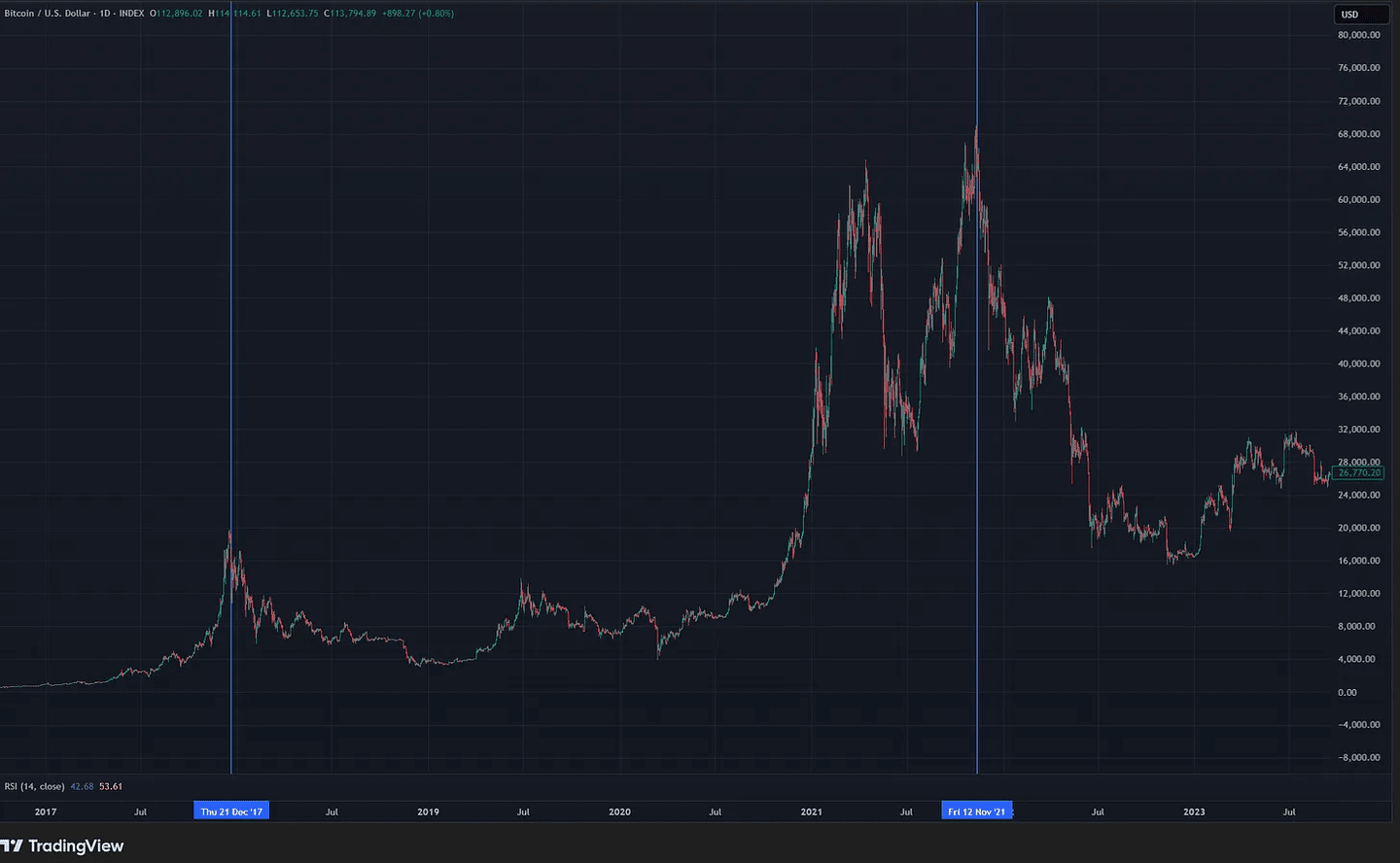
By studying past cycles, you will find that the timing of BTC cycle peaks is very consistent:
In 2021, BTC peaked in November 2021
In 2017, BTC peaked in December 2017
In 2013, BTC peaked in December 2013
The peak of each cycle occurs in the fourth quarter (Q4) after the halving (2013, 2017, 2021, and now 2025).
Another interesting observation is that although September is usually one of the weakest months for Bitcoin, historically, October has been one of the strongest months.
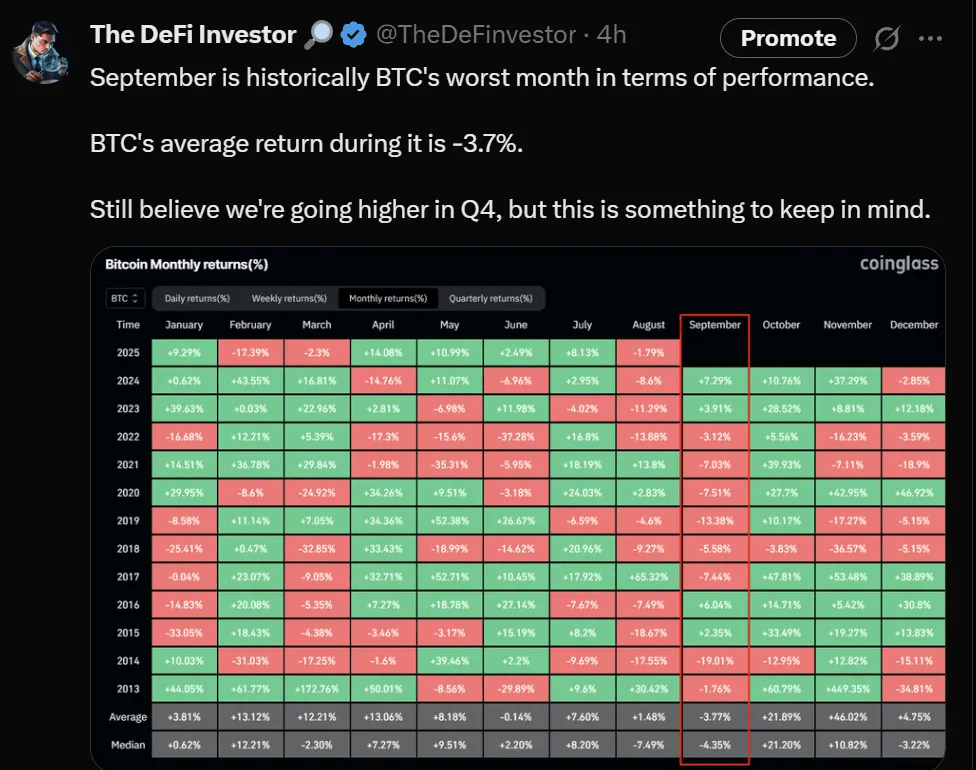
Although many people are panicking due to the recent decline, market corrections at the end of Q3 (September) are not uncommon and are even consistent with past situations. Does this mean that this cycle will be exactly the same as before? Certainly not. But while history does not repeat itself, it often has similarities.
Regarding September, I have mixed feelings because historically, September has performed poorly, but based on past cycle experiences, I believe Q4 will be a good quarter for the cryptocurrency market, as the final phase of a bull market cycle usually sees significant gains.
In addition to seasonal factors, several other factors make me believe Q4 will be bullish:
1. Interest rate cuts are coming (this time it's real)
Let's temporarily step out of cryptocurrency and look at the macroeconomy. According to Polymarket, the probability of the Federal Reserve cutting interest rates in September is 64%. Why is this important?
Because when central banks lower interest rates, borrowing costs decrease, and lower bond yields drive investors toward higher-risk assets, such as cryptocurrencies. Historically, significant rate cuts have been favorable for risk assets (like cryptocurrencies).
2. Cryptocurrency companies continue to buy in large quantities
The data is shocking. According to https://www.strategicethreserve.xyz/, over 532,000 ETH (currently worth over $2 billion) were purchased by cryptocurrency companies through their asset reserves just last week.
It is important to note that a staking Ethereum ETF has not yet been approved.
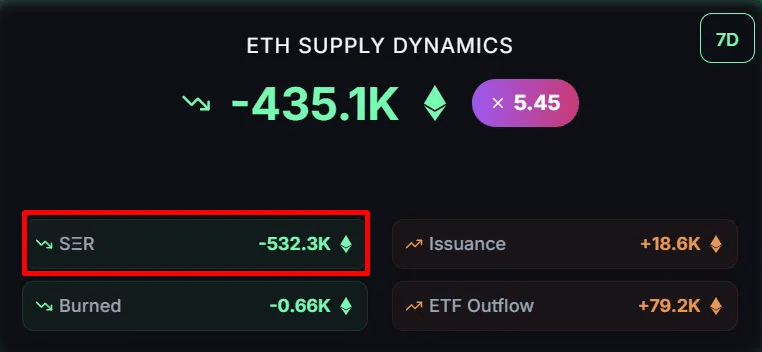
The $2 billion weekly buying pressure is a huge tailwind for ETH and other tokens. While these companies may eventually run out of funds, I believe that given the current inflow, the peak of this bull market has not yet arrived.
3. Top signals have not fully appeared yet
Recently, the search volume for 'crypto' hit a four-year high, and Jim Cramer has turned bullish, which led me to take some profits earlier this week. But apart from that, other 'top signals' mentioned last week have not appeared yet. For example:
Coinbase's App Store ranking is currently still outside the top 200, while it topped the App Store in the last cycle.
The Fear and Greed Index still looks healthy. Despite the recent market rise, it has not reached extreme levels of euphoria.
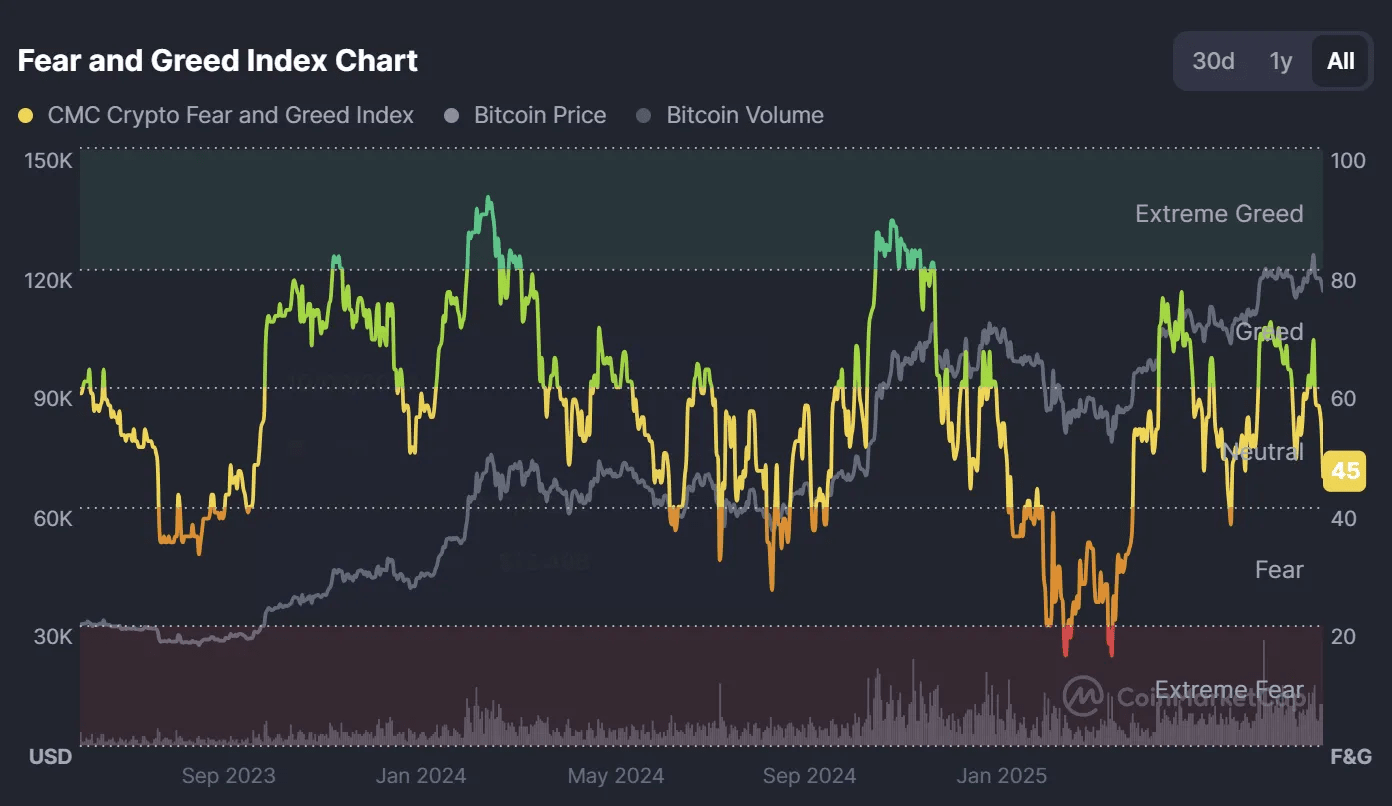
Despite ETH's significant gains in recent weeks, a short-term pullback is normal, but unless this is the worst cycle ever, I believe the best is yet to come.
My positioning strategy
As mentioned above, historically, the best buying opportunity after a halving usually occurs at the end of September in the second year after the halving (the last halving occurred in 2024), as October is typically a strong month for BTC.
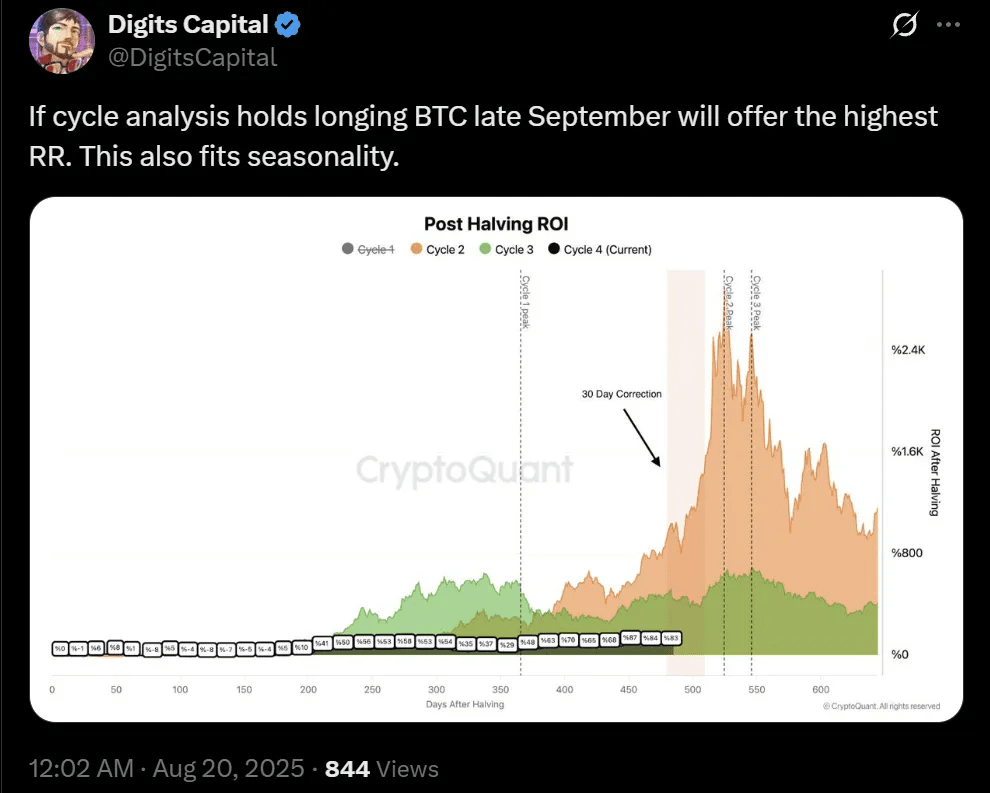
This is exactly my plan.
Based on the popular narrative at the end of September, I will choose some popular tokens at that time to increase my position during a significant dip, anticipating Q4. If there is no major pullback, I will continue to hold my existing positions. Then, I plan to gradually take profits in Q4 and significantly reduce my cryptocurrency exposure by the end of the year (if everything goes as expected).
This is my current plan.
But keep in mind, this is a probability game, and the situation can change significantly in a few months. As investors/traders, our job is to continuously adjust our strategies based on new information.
My advice is to build your own investment logic based on your expectations. But regardless of what you think will happen in the coming months, risk management is always a top priority.
I have said this many times: the hardest part is not making money, but keeping the money you’ve made.



